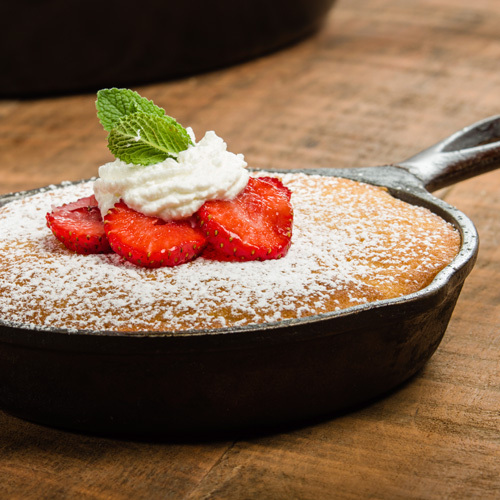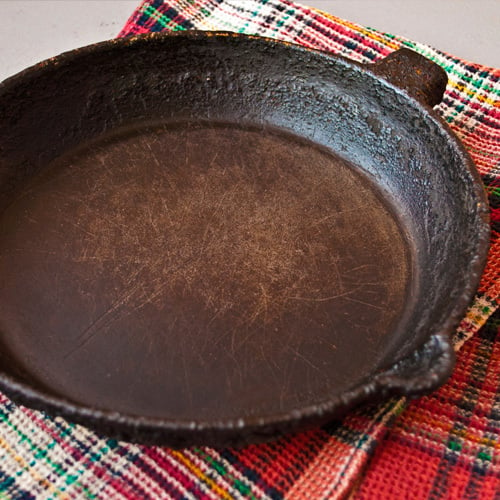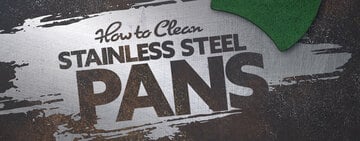The History and Resurgence of Cast Iron Cookware
Although cast iron cookware was invented centuries ago, it is becoming the preferred choice for many cooks today, even over modern pieces. This post will tell you everything you need to know about why cast iron has endured for so long, and why it’s suddenly becoming popular again. We will also go over some tips for keeping your cast iron cookware in good condition, so you can keep using it for years to come.
How is Cast Iron Cookware Made?
Cast iron cookware is made by melting blocks of iron and steel together in a factory. Then chemicals are added to the mixture in order to raise its carbon levels. Next, the molten metal is poured into a mold made of sand, water, and powdered clay. When the cast iron pot or pan is cool, the sand mold is broken and the cookware is released. Workers then smooth each piece before it’s ready to be sold.
Shop All Cast Iron CookwareThe History of Cast Iron Cookware
The first known use of cast iron cookware was during the Han Dynasty in China, around 220 A.D. Casting techniques became widespread in Europe by the 16th century, and since then, this versatile equipment has been a staple in households all over the world. In 1707, Abraham Darby patented the sand casting method, which is similar to the way we make cast iron today. Because of Darby’s contribution, the 18th and 19th centuries saw a boom in cast iron cookware. Cast iron pots and pans were so important to daily life that in his book, The Wealth of Nations, Adam Smith says they were worth more than gold. Cast iron cookware saw a decline in the 20th century as other cooking materials like aluminum grew in popularity.
Reasons Why Cast Iron is Becoming Popular Again
Some people may think that ancient styles of cookware wouldn’t hold up next to modern aluminum or stainless steel pieces, but cast iron is experiencing a resurgence in restaurants and homes all over the country. We’re here to help you understand why people are returning to old cooking methods, and how you can participate in this exciting resurgence.

1. Other Cookware May Come with Health Concerns
A major reason why cast iron cookware is making a comeback is because of health concerns involving other types of cookware. For example, some non-stick coated pans are now known to emit toxic fumes when they are heated past a certain temperature. Cast iron poses none of these risks, and can be heated to extremely high temperatures without negative effects.
2. Cast Iron Cookware Lasts Forever
Many people would rather invest in cookware that will last, instead of spending money on something they’ll need to replace within a few years. Cast iron cookware can be used for hundreds of years, so as long as you treat it right, it should last you a great deal longer than other cookware might.
3. Cast Iron is Visually Appealing
Some restaurant owners are incorporating more cast iron cookware into their mix because it looks great for serving. When cooking with cast iron, you can make sizzling fajitas or a giant skillet cookie, which adds a rustic and unique feel to the presentation.
Can I Resurface a Rusty Cast Iron Pot or Pan?
One of the reasons that cast iron cookware is experiencing a boom in popularity is because it is extremely durable. So durable, in fact, that cast iron pieces can be restored, even when they’re completely rusted over. Follow the steps below to learn how to clean rusty cast iron to make it look like new.

How to Resurface Cast Iron Cookware
- Scrape the pan with steel wool until there are no more rust spots.
- Wash the cookware with warm, soapy water.
- Dry the piece completely. This is an important step that will keep new rust spots from appearing. First, dry with a cloth, then place it on a range burner and let the heat dry your pot or pan the rest of the way.
- Soak paper towels with cooking oil and use them to coat the inside of your cookware with a thin layer of oil.
- Place the cookware on the top rack of the oven, face down at 350 degrees Fahrenheit. Be sure to put a piece of aluminum foil on the bottom rack to catch dripping oil. Leave the piece like this for an hour.
- Remove your pan from the oven and let it cool. It’s now ready to use!
What Are the Best Cast Iron Cookware Brands?
Whether you want to add an antique cast iron skillet to your collection or you’re looking for a brand new dutch oven, these are some of the important brands you should pay attention to.
Old Cast Iron Brands
You can find antique cast iron cookware in places like yard sales and antique shops, but how do you know if you’re getting a good product? Antique brands to look out for include Griswold, Wagner, and Wapak. None of these companies make cast iron cookware anymore, but their legacies live on.
New Cast Iron Brands
If you’d rather start fresh with a new cast iron pan or dutch oven, there are still plenty of brands that make high-quality cast iron cookware. Lodge offers excellent options for new generations that want to participate in the cast iron phenomenon. American Metalcraft also offers cook and serve cast iron items, which are perfect for enhancing presentation.
How Do I Care for My Cast Iron Cookware?
Although cast iron is very durable, you still have to take certain precautions to keep it clean and rust free.
- Keep it Dry: Cast iron cookware will require attention immediately after you’re done using it. You can wash it with a little bit of soap and water, but you’ll have to leave it sitting on a hot burner for a few minutes after you towel dry it. Any amount of water left in the pan can cause a rust spot.
- Reseason Frequently: Seasoning is the process that creates a non-stick layer on your cookware. Be sure to reseason your cast iron often, especially when you first buy or restore it. The more times you use your cookware, the better the layer of seasoning will work.
- Coat with Oil After Every Wash: Before you put your cast iron skillet or pot away, be sure to wipe it down with a light coating of oil to protect the seasoning.
Cast iron cookware has been around forever, and it isn’t going anywhere anytime soon. If you want to get in on this trend, follow these tips and you’ll be whipping up pan-seared steaks and skillet cornbread in no time.








